Two uncharged conducting spheres, A and B, are suspended from insulating threads so that they touch each other as shown in the figure. While a negatively charged rod is held near, but not touching sphere A, someone moves ball B away from A. How will the spheres be charged, if at all ?
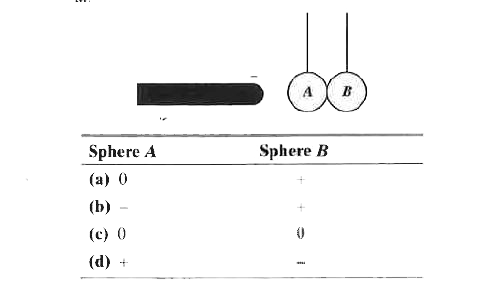
Sphere A - 0, Sphere :- +
Sphere A - 0, Sphere :- +
Sphere A - 0, Sphere :- 0
Sphere A - +, Sphere :- -
The correct Answer is:D
Step by step video, text & image solution for Two uncharged conducting spheres, A and B, are suspended from insulating threads so that they touch each other as shown in the figure. While a negatively charged rod is held near, but not touching sphere A, someone moves ball B away from A. How will the spheres be charged, if at all ? by Physics experts to help you in doubts & scoring excellent marks in Class 12 exams.
Updated on:21/07/2023Topper's Solved these Questions
- ELECTRIC CHARGES AND FIELDSBOOK - RESNICK AND HALLIDAYCHAPTER - ELECTRIC CHARGES AND FIELDSEXERCISE - Practice Questions (More than one correct Type )
3 Videos
- ELECTRIC CHARGES AND FIELDSBOOK - RESNICK AND HALLIDAYCHAPTER - ELECTRIC CHARGES AND FIELDSEXERCISE - Practice Questions (Linked Comprehension)
5 Videos
- ELECTRIC CHARGES AND FIELDSBOOK - RESNICK AND HALLIDAYCHAPTER - ELECTRIC CHARGES AND FIELDSEXERCISE - Problems
63 Videos
- ELASTICITYBOOK - RESNICK AND HALLIDAYCHAPTER - ELASTICITYEXERCISE - PRACTICE QUESTIONS (Integer Type)
3 Videos
- ELECTRIC POTENTIALBOOK - RESNICK AND HALLIDAYCHAPTER - ELECTRIC POTENTIALEXERCISE - (PRACTICE QUESTIONS) Integer Type
1 Video
Similar Questions
(a) Two charged bodies, A and B are suspended from a fixed point with the help of silk threads as shown in the figure. If A is positively charged can we identify the nature of charge on 'B' ?
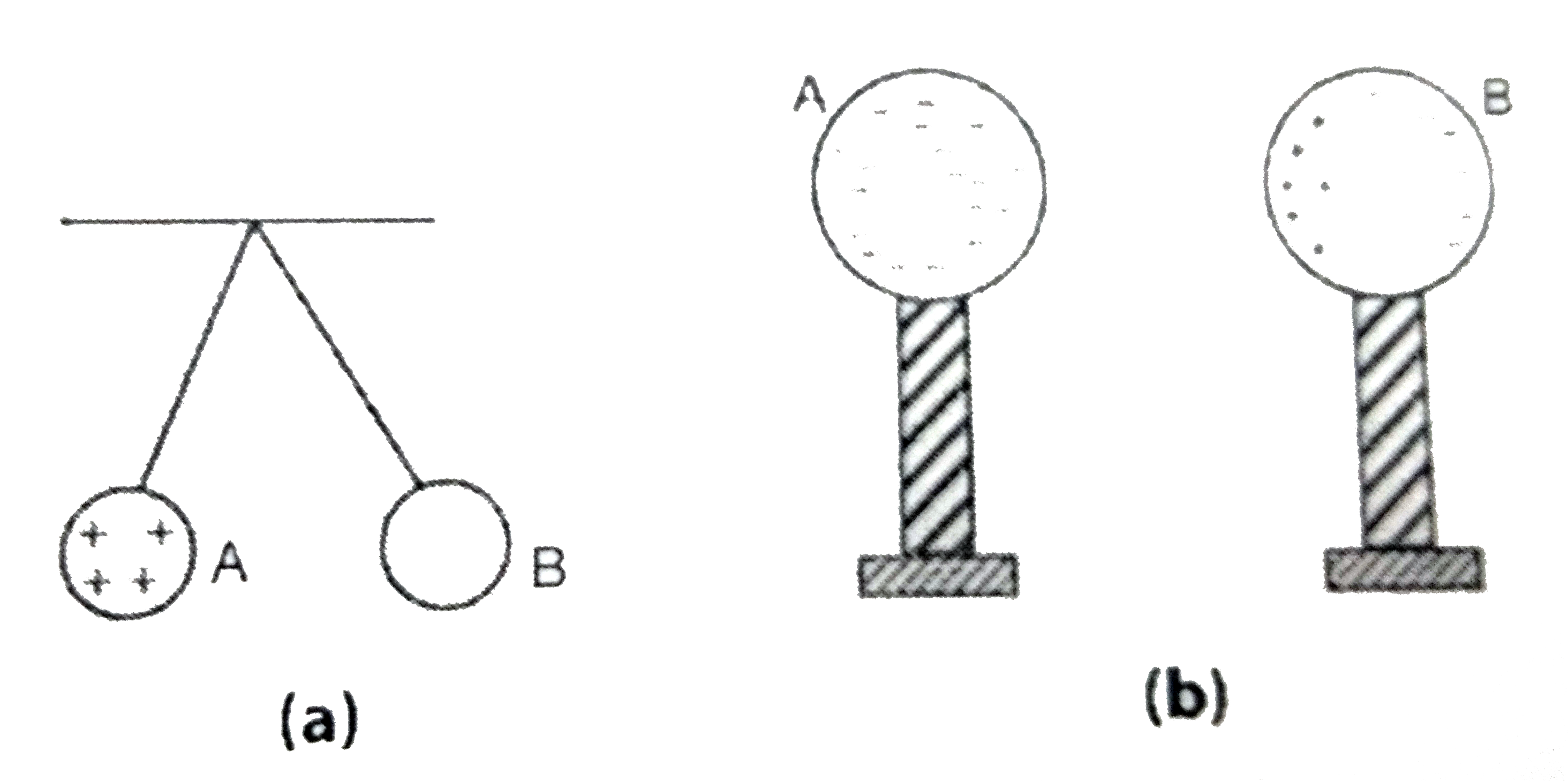
(b) A negatively charged conducting sphere A and a neutral sphere B are kepton insulating stands and brought cose to each other. The charge distri-bution is as shown in the figure.
Is B charged ? What type of force exists between A and B ?
View Solution(a) Two charged bodies, A and B are suspended from a fixed point with the help of silk threads as shown in the figure. If A is positively charged can we identify the nature of charge on 'B' ?

(b) A negatively charged conducting sphere A and a neutral sphere B are kepton insulating stands and brought cose to each other. The charge distri-bution is as shown in the figure.
Is B charged ? What type of force exists between A and B ?
View Solution
Knowledge Check
Two uncharged conducting spheres are placed in contact with each other. Which of the following diagrams best represents the charge distribution when a negatively charged rod is placed near one of them?
A B
B C
C D
D
The identical metal spheres A and B are supported on insulating stands and placed in contact . What kind of charges will A and B develop when a negatively charged ebonite rod is brought near A ?
AA will hae a positive charge and B will have a negative chargeBA will have a negative charge and B will have a positive chargeCBoth A and B will have positive chargesDBoth A and B will have negative chargeThree metal spheres A,B and C are mounted on insulating stands. The spheres are touching one another, as shown in the diagram A strong positively charged object it brought near sphere A and a strong negative charge is brought near sphere C. While the charged objects remains near spheres A anc C, sphere B is removed by means of its insulating stand. After the charged objects are removed, sphere B is first touched to sphere A and then to sphere C. The resulting charge on B would be-
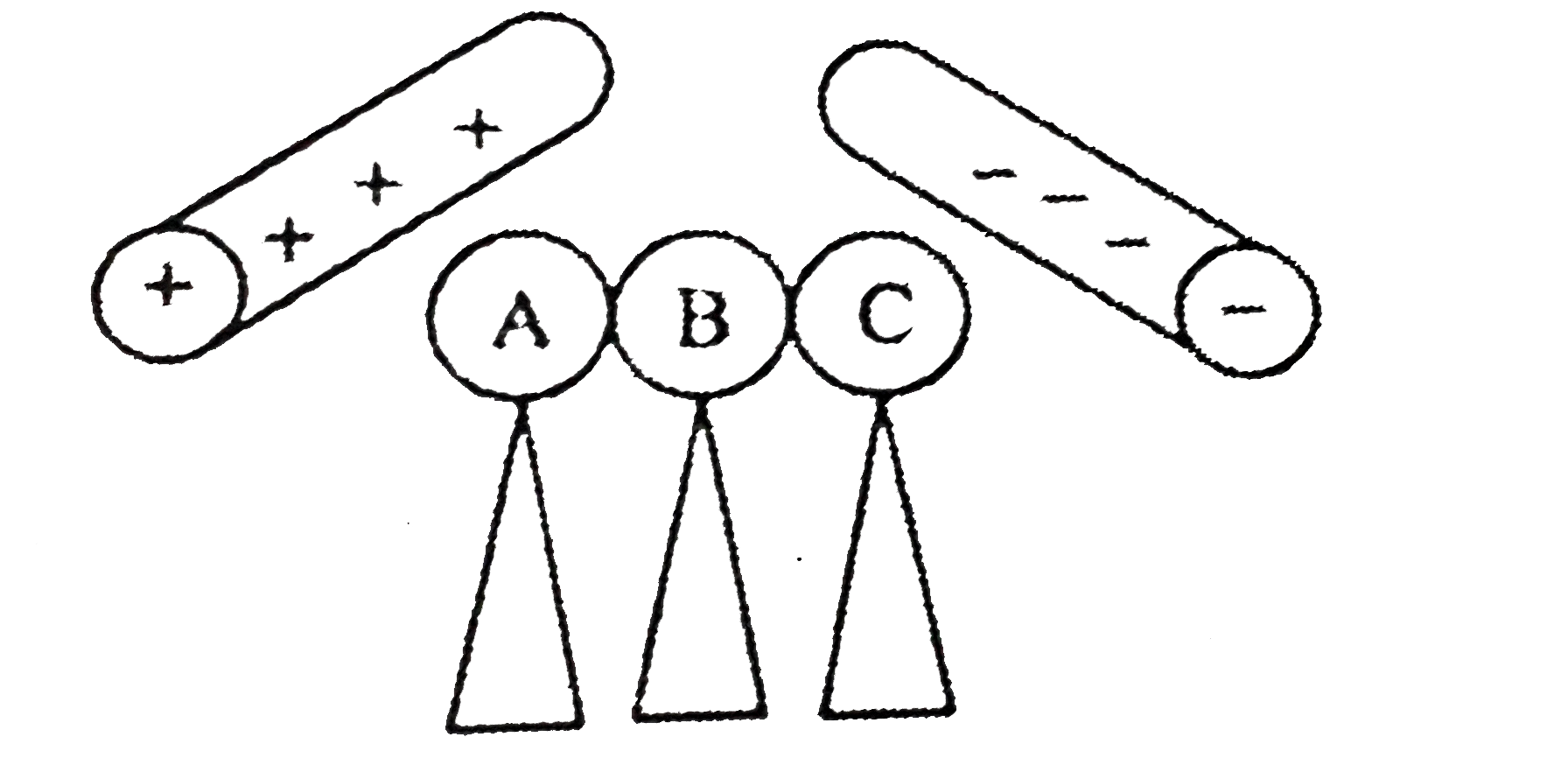 Athe same sign but 1/2 the magnitude as originally on sphere A.Bthe opposite sign but 1/2 the magnitude as originally on sphere A.Cthe opposite sign but 1/4 the magnitude as originally on sphere ADthe same sign but 1/2 the magnitude as originally on sphere C
Athe same sign but 1/2 the magnitude as originally on sphere A.Bthe opposite sign but 1/2 the magnitude as originally on sphere A.Cthe opposite sign but 1/4 the magnitude as originally on sphere ADthe same sign but 1/2 the magnitude as originally on sphere C
Two identical, small metallic shpheres A and B are placed side by side on an insultaing smooth table as shown in the figure. If A is positively charged and held fixed with the table , discuss the motion of B.
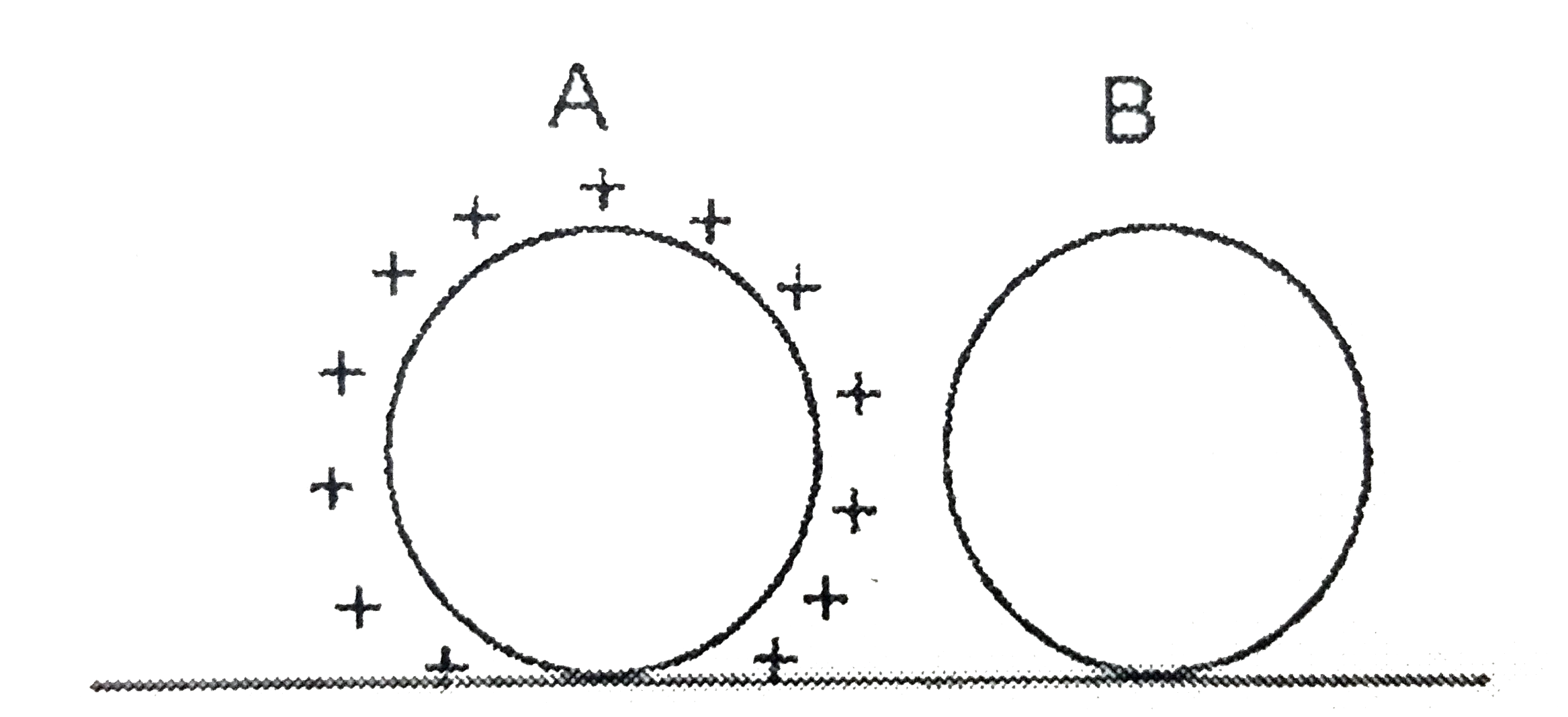
View Solution(a) Two charged bodies, A and B are suspended from a fixed point with the help of silk threads as shown in the figure. If A is positively charged can we identify the nature of charge on 'B' ?

(b) A negatively charged conducting sphere A and a neutral sphere B are kepton insulating stands and brought cose to each other. The charge distri-bution is as shown in the figure.
Is B charged ? What type of force exists between A and B ?
View SolutionA point charge q is placed at some distance d away from the centre of a grounded conducting sphere of radius r, as shown in the figure. The charge that flows the earth to the sphere is
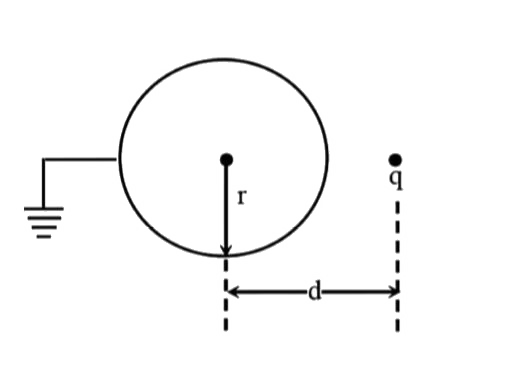
View SolutionA metal sphere is suspended from a nylon thread. Initially, the metal sphere is uncharged. When a positively charged glass rod is brought close to the metal sphere, the sphere is drawn towards the rod. But if the sphere touches the rod, it suddenly flies away from the rod. Explain, why the sphere is first attracted then repelled?
View SolutionAn electrically isolated hollow (initially uncharged), conducting sphere has a small positively charged ball suspended by an insulating rod from its inside surface (see diagram).
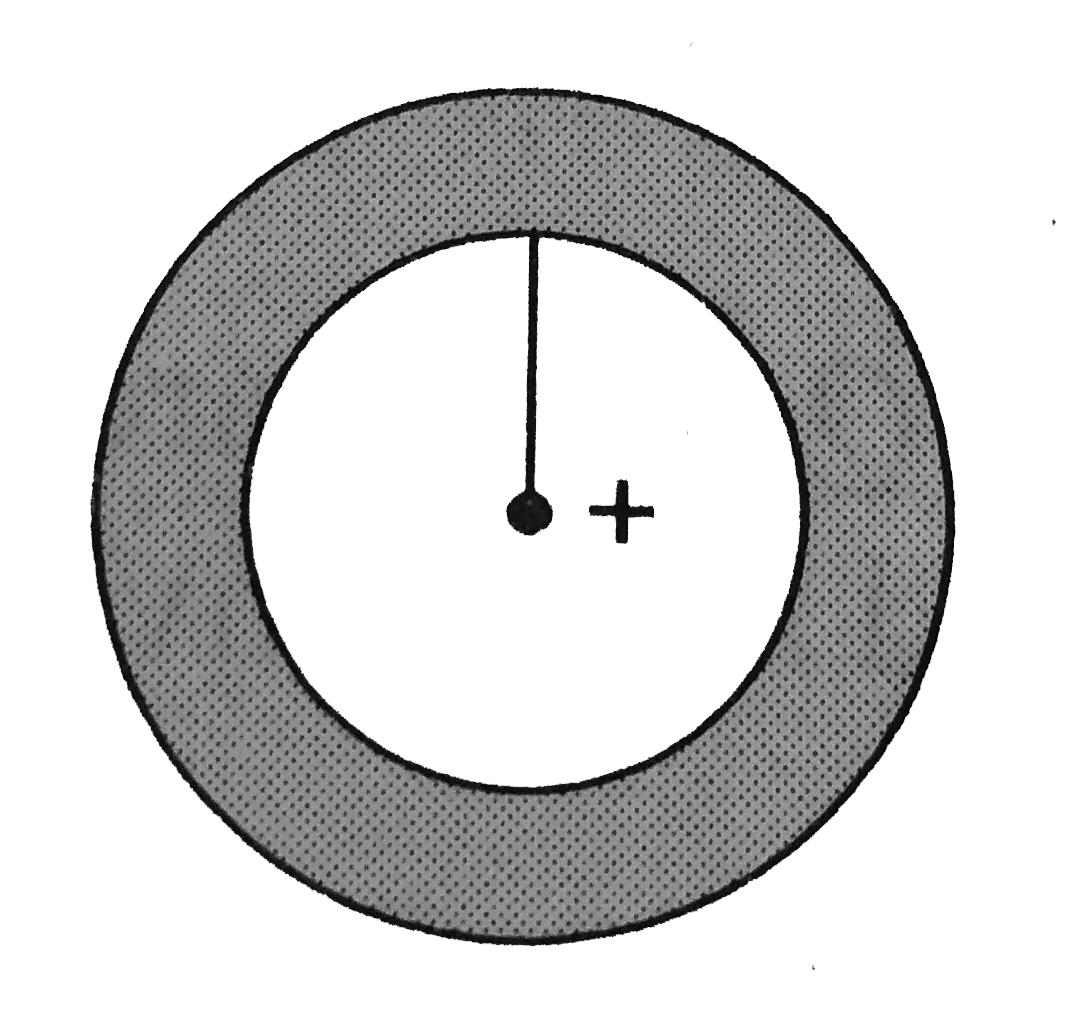
This causes the inner surface of the sphere to become negatively charged. When the ball is centred in the sphere, the electric field outside the conducting sphere is
View Solution